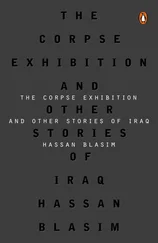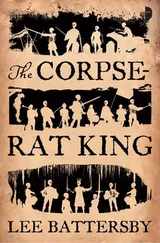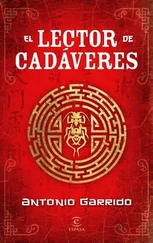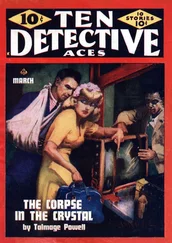Poisonous Waters: An encyclopedia from the time of the Chin dynasty containing what is possibly the first recorded reference to dengue fever. The volume was written between 420 and 265 BC, edited formally in AD 610 during the Tang dynasty, and reedited in AD 992 during the Northern Tsong dynasty. Dengue fever is a severe illness transmitted by the Aedes aegypti mosquito, which breeds in fetid or polluted water. A particularly life-threatening variety is dengue hemorrhagic fever, which causes loss of liquid and blood due to coagulation problems, which can bring about shock and death in as little as four hours.
Prefecture: During the Southern Tsong dynasty, China was divided, for administrative purposes, into sixteen circuits ( lu ) or provinces ( tao ), each roughly the same size as Ireland, and with a governor who was the judicial intendant. Each circuit was subdivided into ten to twenty prefectures, locally governed administrative units with a certain number of officials and assistants. Every prefecture was then divided into subprefectures, or districts ( hsien ), between two and twenty per prefecture, each usually overseen by two or three officials. The subprefect ( chih-hsien or hsien-ling ), who acted as judge and magistrate and carried out other administrative functions, had under him a registrar ( chupu ), who was in charge of tax collection, as well as a sheriff or chief of police ( hsien-wei ), who was responsible for keeping the peace and ensuring laws were upheld.
Punishments: Lingchi , or death by one thousand cuts, was the worst punishment in the penal code. But there were many other forms of punishment. Whipping with bamboo canes was one of the most common; the length, width, and weight of the canes were strictly stipulated and categorized. The jia was a yoke made of a square piece of dry wood that could be separated in half and had a hole in the middle for the head. Handcuffs, also known as wives, were made of dry wood and could only be used on men; foot shackles were made of metal.
Qián : The principal monetary unit in China was a thin coin that had a hole in the center so it could be hung from a cord or attached to one’s belt. A cord with a thousand qián would weigh around five kilos, or eleven pounds, and be equivalent to one tael (approximately forty grams of pure silver). During the Tsong dynasty, there was also paper money. Initially, paper bills were similar to credit notes that could be changed for quantities of money deposited with wealthy merchants; in later years there were credit certificates and a regularized paper money unit. Forgery was punishable by death and informants were offered generous rewards; both notices were printed on the bills themselves alongside the image of a hanged or quartered forger so that illiterates would understand the warning. Also for the benefit of illiterates, bills had a picture of the number of pigs roughly equivalent to the value of the bill.
Ritual and Filial Piety: Rituals organized society and were structured according to a rigid hierarchy: a man was not defined by his personality but by how well he observed the rites—that is, by behaving in a regulated way with respect to his social rank. As with their biological fathers, inferiors owed respect to their “father emperor,” a virtuous, benevolent being who had the right and duty to rule others. In traditional Chinese culture, ceremonial specialization was a constant theme between court members and aristocratic families, above all in the Confucian period. The Li Ji and the Bohutong ( Book of Rites ) both stipulated that the mourning period after the death of a father was three years and that the most orthodox way of observing this was to withdraw from public life, wear burlap, and live in a hut near the burial site. Poor people unable to cease working observed the mourning period by refraining from participation in festive occasions, marriage, and sexual activity. Chinese people offered sacrifices to their dead during funeral rites—whether Taoist, Buddhist, Confucian, or a combination of the three.
Sampan: A plain sailing vessel without a keel between 3.5 and 4.5 meters long, or 11 feet to 14 feet, used either for fishing or as a residence. Sampan literally means “three planks,” in reference to the simplicity of making such a vessel, which requires one plank for the bottom and two for the sides. The sampan is possibly the oldest known sailing boat and has kept its original design since it came into existence in AD 600. It came to be known as the “junk rig.”
Time: Year 1 corresponds in the West with the birth of Christ, and in Muslim countries with Mohammed’s flight from Mecca in AD 622. But in Imperial China there is more than one initial date—every time a new emperor comes to power. Each emperor may also decree new eras within his reign, sometimes according to the zodiac. In Ningzong’s reign (1194–1224), four separate eras occurred. The first, lasting from 1195 to 1200, was named the Qingyuan; the second, from 1201 to 1204, Jiatai; the third, from 1205 to 1207, Kaixi; and the fourth, from 1208 until Ningzong’s death in 1224 at the age of fifty-six, Jiading.
A year was divided into twelve moon months, usually beginning in February (first moon month) and finishing in January (twelfth moon month). Every year was separated into twenty-four climatic periods.
Days were broken up into twelve hourly intervals known as shichen (one Chinese hour is equivalent to two western hours). Each shichen is divided into eight ke (fifteen minutes), each containing fifteen fen , so a fen is equal to a minute. An hour is known as a tshuco , and a jike is a quarter of an hour.
This difference is particularly relevant when considering the death periods. The law stated that no more than four shichen could elapse between the time a death was reported and the time a relevant judge examined the corpse. Because I wanted to make the novel easier to read, I used “hour” instead of shichen ; the maximum time allowed before beginning an examination would really have been eight western hours. The nighttime hours were not included, so in practice the time allowed before beginning an examination extended to sixteen Western hours.
The denomination and classification of the hours were as follows:

The denomination and classification of the months were as follows:

Since the introduction of Buddhism to China, years have also been named after signs of the zodiac and repeat in twelve monthly cycles corresponding with the hourly denominations.
The months are organized into three groups: Meng (first), Zhong (middle), and Ji (last). The seasons are named Chun (spring), Xia (summer), Qiu (autumn), and Dong (winter). The names of the months are formed using both concepts; for example, ki-tsin is the last month of autumn. Months can also be denominated in the same way as the hours and the years and are made up of three ten-day weeks.
University: Like the leaders of preceding dynasties, the Tsong advocated that the most virtuous and capable citizens, regardless of their social or economic extraction, should hold public offices. This idea was supported by a system of exams for civil service: any citizen could take the extremely difficult exams, and if he passed, he became a government employee, a career that could even lead one to become prime minister.
Читать дальше














